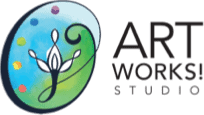
Art Teachers Can Change the World (understanding and fostering creative thinkers)
D
ear Hiring Manager,
I am applying for an art teaching position, because like Jean Houston, I believe that art educators can change the world! My urban public charter school is closed in June 2016 and I have made the decision that I want to get back to I love most! I believe that imagination, play, and creativity are important for human brain development, and the arts are one of the ways students can get that stimulation. Education that is hands-on, sensory-rich, experience-laden, which calls for the whole mind of whole child, can develop our human potential.
I have many academic, work and volunteer experiences and the skill sets that would enhance any team dedicated to creating a school with great learning experiences for ALL children learning well together!
So begins my cover letter as a begin the difficult journey of “career shift” from Public School teacher/administrator to the wide world beyond it.
Here’s the deal The more I studied “special education” the less I believed in it and instead fully embraced the idea that there is no such thing as a standardized child. Humans are diverse. I like to say that in schools, we grow humans, not corn crops – period. It is dangerous and non-productive to think otherwise. The way we “do school” is changing with each mandated high-stake standard and standardized test created. Textbook companies follow the money leaving thousands of children behind in the wake.
I envision public school as a giant vice grip. As we turn the handle, the sides of the grip narrow, and children keep popping out right and left as we scramble to label them with one of the thirteen federal categories that document eligibility for specialized services. These categories for which students can be evaluated and made “eligible for services” drive federal funding (and national budgets), not local school teaching and learning. In reality, teachers need to get to know students’ individual strengths and weaknesses of the students sitting in front of them in order to create the on-ramps (specialized learning and classroom accommodations) to the grade-level-common-core-curriculum. In my experience, in most urban public schools there is just not the capacity to do this job well. Creativity is often left out of the equation. As a special education “resource” and “intervention” teacher, I have had more than one principal direct me to, “pull them out of art or music to teach them reading or math basic skills.” In other words, they can miss those classes without dire consequence!
I am leaving special education as a job inside the school-as-institution box and trying to make the leap outside the box to better align with what lives inside me. I am a constructivist reading teacher by training and an artist and social-reconstructivist by nature. Using what I know about learning and creativity I want to do my best to develop human potential (especially children with diverse learning, language, and behavioral needs). Numerous studies highlight the loss of creativity that happens to students during their time in schools. We cannot let that continue: we need the arts in schools, on a consistent basis, for all students. If you haven’t watched Sir Ken Robinson make his entertaining and profoundly moving case for creating an educational system that undermines (rather than nurtures creativity) watch his TedTalk.
We write common core standards that dictate whether or not a child is making typical growth in reading, writing, and language and then use those scores to subjectively measure the teacher’s teaching skills in order to determine whether or not that teacher should continue teaching. I have grown weary with this system that is not sensitive to measure growth such as a tenth-grade student reading at the third-grade level moving up one grade level in a semester. I have no doubt in my mind that the one level increases that child’s potential.
Emily Wheling argues for the need for creative minds on her blog — that creativity is a critical 21st-century skill necessary for successful problem solving within the current economy and workplace. She goes on to say that according to the Harvard Business Review, the creative sector of the U.S. economy currently employs more than 30% of the workforce, or over thirty-eight million architects, artists, designers, educators, engineers, entertainers, scientists, and musicians. Corporate recruiters are visiting art schools around the United States looking for innovative talent, “…because of abundance, businesses are realizing that the only way to differentiate their goods and services in today’s overstocked marketplace is to make their offerings physically beautiful and emotionally compelling.” Check out what she has to say about more ways to foster creativity. The Partnership for 21st Century Learning offers an extensive study that includes key actions to help enhance student creativity in educational contexts and beyond:
Perhaps my path to out-of-the-box educator will lead me to a position as an art teacher, or art therapist (with further study), educational consultant or as a member of a team that designs another school. The path is not yet charted (and probably not paved) but I am packing my bags and getting ready for the journey. Wish me Bon Voyage!
Share
If you're new here, you may want to subscribe to my RSS feed. Thanks for visiting!


 ear Hiring Manager,
ear Hiring Manager,